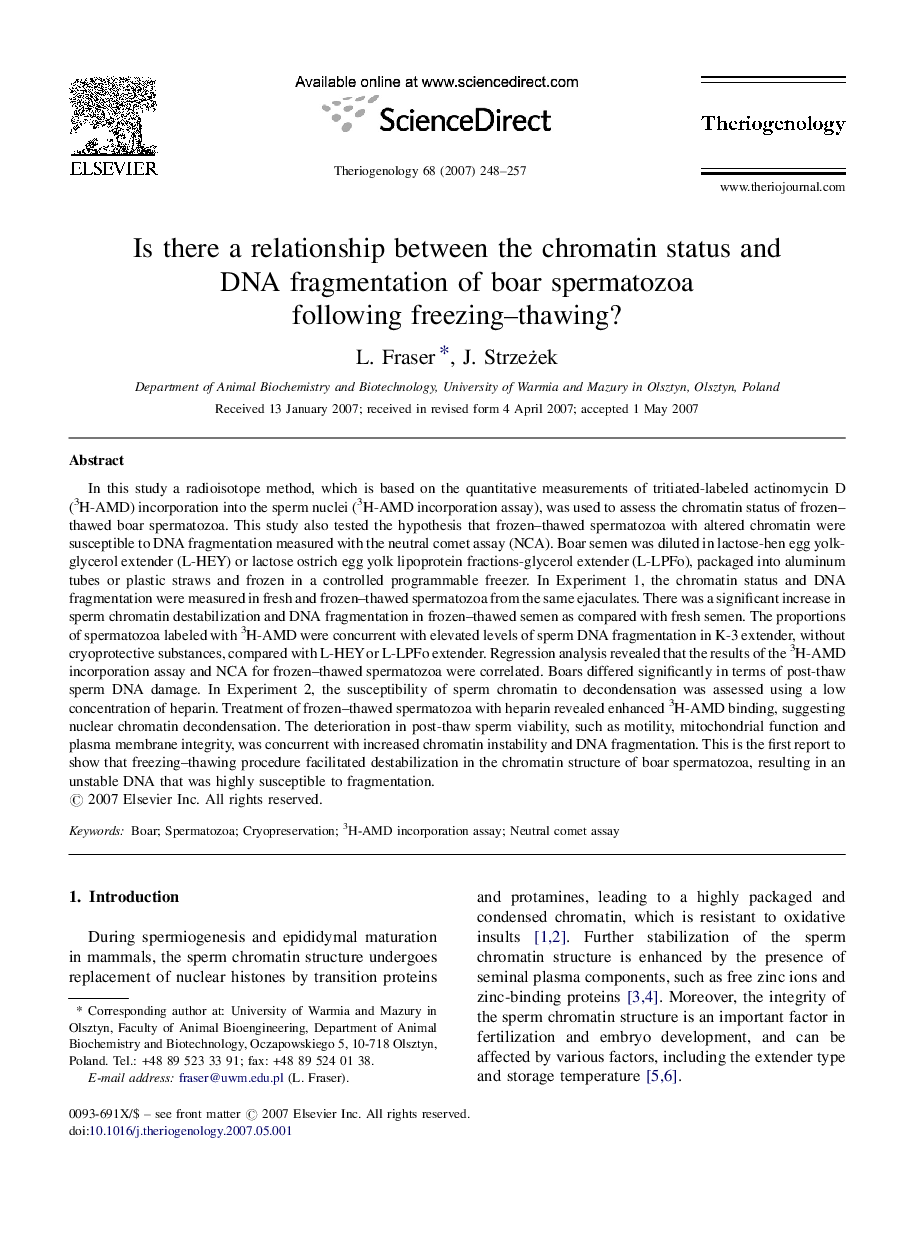| Article ID | Journal | Published Year | Pages | File Type |
|---|---|---|---|---|
| 2096233 | Theriogenology | 2007 | 10 Pages |
In this study a radioisotope method, which is based on the quantitative measurements of tritiated-labeled actinomycin D (3H-AMD) incorporation into the sperm nuclei (3H-AMD incorporation assay), was used to assess the chromatin status of frozen–thawed boar spermatozoa. This study also tested the hypothesis that frozen–thawed spermatozoa with altered chromatin were susceptible to DNA fragmentation measured with the neutral comet assay (NCA). Boar semen was diluted in lactose-hen egg yolk-glycerol extender (L-HEY) or lactose ostrich egg yolk lipoprotein fractions-glycerol extender (L-LPFo), packaged into aluminum tubes or plastic straws and frozen in a controlled programmable freezer. In Experiment 1, the chromatin status and DNA fragmentation were measured in fresh and frozen–thawed spermatozoa from the same ejaculates. There was a significant increase in sperm chromatin destabilization and DNA fragmentation in frozen–thawed semen as compared with fresh semen. The proportions of spermatozoa labeled with 3H-AMD were concurrent with elevated levels of sperm DNA fragmentation in K-3 extender, without cryoprotective substances, compared with L-HEY or L-LPFo extender. Regression analysis revealed that the results of the 3H-AMD incorporation assay and NCA for frozen–thawed spermatozoa were correlated. Boars differed significantly in terms of post-thaw sperm DNA damage. In Experiment 2, the susceptibility of sperm chromatin to decondensation was assessed using a low concentration of heparin. Treatment of frozen–thawed spermatozoa with heparin revealed enhanced 3H-AMD binding, suggesting nuclear chromatin decondensation. The deterioration in post-thaw sperm viability, such as motility, mitochondrial function and plasma membrane integrity, was concurrent with increased chromatin instability and DNA fragmentation. This is the first report to show that freezing–thawing procedure facilitated destabilization in the chromatin structure of boar spermatozoa, resulting in an unstable DNA that was highly susceptible to fragmentation.
